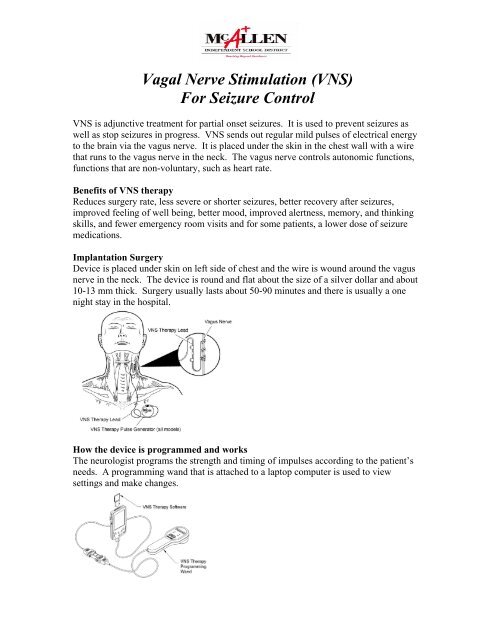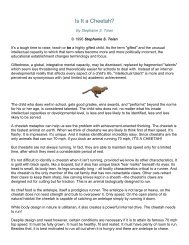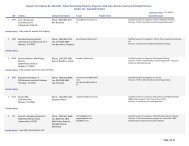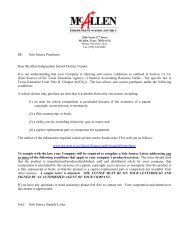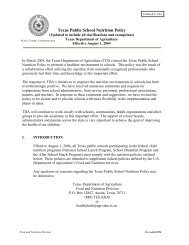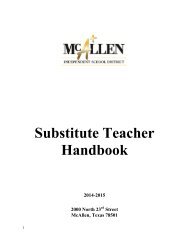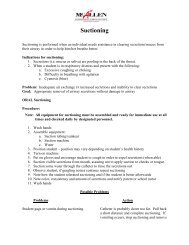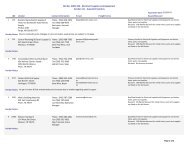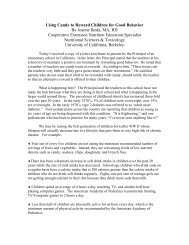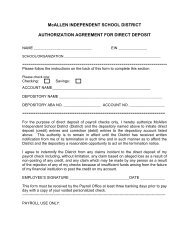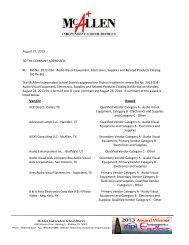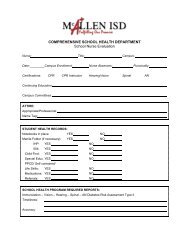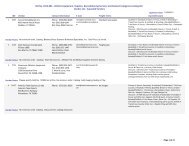Vagal Nerve Stimulation (VNS)
Vagal Nerve Stimulation (VNS)
Vagal Nerve Stimulation (VNS)
You also want an ePaper? Increase the reach of your titles
YUMPU automatically turns print PDFs into web optimized ePapers that Google loves.
<strong>Vagal</strong> <strong>Nerve</strong> <strong>Stimulation</strong> (<strong>VNS</strong>)<br />
For Seizure Control<br />
<strong>VNS</strong> is adjunctive treatment for partial onset seizures. It is used to prevent seizures as<br />
well as stop seizures in progress. <strong>VNS</strong> sends out regular mild pulses of electrical energy<br />
to the brain via the vagus nerve. It is placed under the skin in the chest wall with a wire<br />
that runs to the vagus nerve in the neck. The vagus nerve controls autonomic functions,<br />
functions that are non-voluntary, such as heart rate.<br />
Benefits of <strong>VNS</strong> therapy<br />
Reduces surgery rate, less severe or shorter seizures, better recovery after seizures,<br />
improved feeling of well being, better mood, improved alertness, memory, and thinking<br />
skills, and fewer emergency room visits and for some patients, a lower dose of seizure<br />
medications.<br />
Implantation Surgery<br />
Device is placed under skin on left side of chest and the wire is wound around the vagus<br />
nerve in the neck. The device is round and flat about the size of a silver dollar and about<br />
10-13 mm thick. Surgery usually lasts about 50-90 minutes and there is usually a one<br />
night stay in the hospital.<br />
How the device is programmed and works<br />
The neurologist programs the strength and timing of impulses according to the patient’s<br />
needs. A programming wand that is attached to a laptop computer is used to view<br />
settings and make changes.
The patient is not aware that the device is operating. Holding a special magnet near the<br />
device activates and deactivates it. The battery lasts one to sixteen years.<br />
Precautions and warnings:<br />
Continuous or frequent magnet use will use up the battery and could hurt the vagus nerve.<br />
If the <strong>VNS</strong> magnet is being used a lot, the regular stimulation programmed by the doctor<br />
may need to be changed.<br />
Properly working small appliances (i.e. microwave, toaster, hair dryers) should not affect<br />
the generator. Cell phones have not shown to have any affects in current tests.<br />
Sources with high energy levels, such as transmitting antennas, may interfere with the<br />
generator. Move student at least 6 ft away from anything that is interfering with the<br />
device.<br />
Some things that may affect it are: strong magnets, hair clippers, vibrators, and<br />
loudspeakers. Keep these things at least 6 in from the chest. It is possible for the<br />
generator to interfere with hearing aids and any device that operates in the 30-100 kHz<br />
range.<br />
The <strong>VNS</strong> magnet can damage: credit cards, TV’s, computer disks. Keep magnet at least<br />
10 in. away.
<strong>Vagal</strong> <strong>Nerve</strong> <strong>Stimulation</strong> (<strong>VNS</strong>)<br />
Problem:<br />
Goal:<br />
Potential for injury r/t seizure disorder.<br />
Early intervention of students with seizures, and appropriate use of<br />
equipment.<br />
Each student will have a different plan given by the neurologist as to how often to use the<br />
<strong>VNS</strong>. Some students will respond quickly, others may need other intervention.<br />
Procedure:<br />
Not all students with <strong>VNS</strong> will have the magnet mode turned on; it will be up to the<br />
student’s doctor whether it is on or off.<br />
To start stimulation: When the student has an aura, when the seizure begins, or during a<br />
seizure.<br />
1. Obtain magnet specific for <strong>VNS</strong><br />
2. Place picture side toward student<br />
3. Pass the magnet over the pulse generator for about 1 second. <strong>Stimulation</strong> should<br />
begin immediately after the magnet passes over the generator.<br />
To stop stimulation: When the student wants to sing or eat and the stimulation interferes<br />
with those activities (with the doctor’s permission), or if stimulation becomes<br />
uncomfortable or painful.<br />
1. Obtain magnet specific for <strong>VNS</strong><br />
2. Place picture side toward student<br />
3. Place and hold magnet over the pulse generator, if stimulation does not stop move<br />
the magnet around until stimulation stops. Hold the magnet in place over the<br />
generator for as long as you want the stimulation stopped (you may need to tape it<br />
in place). Call the parents if stimulation was stopped due to pain or an unusual<br />
feeling and suggest that the student go to their doctor.<br />
Possible Problems<br />
Problem<br />
intense neck pain, hoarseness, choking,<br />
or trouble breathing<br />
tingling sensation in the neck<br />
and/or mild hoarseness<br />
Action<br />
The generator may not be working<br />
right, Call the student’s parents to<br />
have the generator checked.<br />
Normal with <strong>VNS</strong> stimulation, no<br />
action should be taken unless the<br />
above symptoms are noted
References:<br />
Epilepsy: Patient’s Manual for Vagus <strong>Nerve</strong> <strong>Stimulation</strong> with the <strong>VNS</strong> Therapy<br />
System; August 2006, Cyberonics®, Inc., Houston, Texas<br />
www.vnstherapy.com<br />
Resources for more information:<br />
Cyberonics video on “What is a <strong>VNS</strong>” and how to use the magnet<br />
http://www.vnstherapy.com


